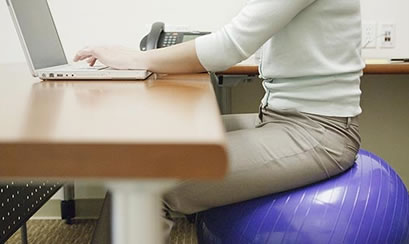Ergonomic / Workplace Assessment
Ergonomic assessments, also referred to as workstation assessments, ensure that a worker’s workstation is ergonomically designed to minimise the risk of injury and maximise comfort when at working on a desk top computer, thereby increasing potential productivity.
What is the purpose of the Assessment?
- To ensure people working from an office base, reduce the risk of injury as a result of uncomfortable postures, mal-aligned body parts or repetitive strain. This assessment ensures that each person’s workstation is designed to minimise any discomfort for office based workers. Re-assessment is advised for anyone recovering from a pre-existing injury and preventing any aggravation of the injury, or preventing any injury in an “at risk of injury” worker.
- For workers who work from home, to ensure their home work environment is safe and ergonomically designed.
Assessment includes reviewing and making recommendations as appropriate for the following:
- posture
- physical and muscular work demands
- equipment and workplace design
- environmental factors (lighting, noise and temperature)
- keyboard use
Free Home Working Set Up Consultation
Home Working set up advice Key factors to consider:
- If you are working from your laptop, make sure it is at eye level. Use stacks of books to achieve the desired height.
- Your laptop screen when at eye level should be no more than arm’s length from you.
- Use a wireless or plug-in keyboard and mouse to operate your laptop. Call me for a free home-working setup consultation. 07530189786.
Quick Self Assessment
Is your chair properly adjusted?
- Adjust your seat height so that your feet are positioned flat on the floor and fully supported. Your knees should be just below the height as your hips. Thighs and hips should be roughly parallel to the floor or angled slightly down.
- Any lumbar support should make contact with the small curve in your lower back.
- Hands, wrists and forearms should be straight, in-line and roughly parallel to the floor.
- Make sure that you maintain a distance of one to two inches (or two finger widths) between the front edge of the seat pan and the backside of your knees. If the seat pan is too deep, you may need a lumbar wedge or pillow.
- Ensure your screen it at eye level and within an arms length of your key board.
- If working from home using a lap top, raise it to eye level by stacking books to achieve eye level height. Invest in a wireless keyboard and mouse (approx. £20 from Amazon, Curry’s,Tesco, Argos)
- If using a standing work station remember, take regular breaks and if possible alternate between standing and sitting regularly.


